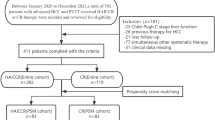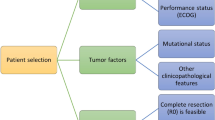Abstract
Background and Aims
Deceased donor liver transplantation (DDLT) rates for candidates with hepatocellular carcinoma (HCC) have significantly increased in the MELD era because of the extra priority given to these candidates. We examined the incidence and pre-DDLT radiological and donor factors associated with post-DDLT HCC recurrence in the MELD era.
Methods
Outcomes of HCC candidates aged ≥18 years that underwent DDLT between 2/28/02 and 6/30/08 (n = 94) were reviewed. The primary outcome was biopsy-proven post-LT HCC recurrence at any site. Kaplan–Meier analysis was used to calculate the cumulative incidence and Cox regression was used to identify the predictors of post-LT HCC recurrence.
Results
The median age of the 94 candidates who met the study criteria was 54 years, 64% had hepatitis C, median lab MELD was 13, and median pre-LT AFP was 47 ng/dl. Based upon pre-DDLT imaging, 94% candidates met the Milan criteria. The median waiting time to transplant was 47 days and 27% received pre-DDLT loco-regional therapy. Seventeen (18%) developed HCC recurrence after 2.1 median years with a cumulative incidence of 6.8, 12, and 19% at 1, 2, and 3 years post-DDLT. The pre-DDLT number of lesions (p = 0.015), largest lesion diameter (p = 0.008), and higher donor age (p = 0.002) were the significant predictors of HCC recurrence after adjusting for pre-LT loco-regional therapy and waiting time. Post-LT HCC recurrence (p < 0.0001) and higher donor age (p = 0.029) were associated with lower post-LT survival.
Conclusions
Post-LT HCC recurrence is higher in our MELD era cohort than the reported rate of 8% at 4 years in Mazzaferro et al.’s study. The risk of HCC recurrence was significantly associated with the number of lesions and size of the largest lesion at the time of DDLT as well as with older donor age. Risk stratification using a predictive model for post-LT HCC recurrence based on pre-LT imaging and donor factors may help guide candidate selection and tailoring of HCC surveillance strategies after LT.



Similar content being viewed by others
Abbreviations
- DDLT:
-
Deceased donor liver transplantation
- HCC:
-
Hepatocellular carcinoma
- IOC:
-
Index of concordance
- MELD:
-
Model for end-stage liver disease
References
Mazzaferro V, Regalia E, Doci R, et al. Liver transplantation for the treatment of small hepatocellular carcinomas in patients with cirrhosis. N Engl J Med. 1996;334:693–699.
Freeman RB, Wiesner RH, Edwards E, Harper A, Merion R, Wolfe R. Results of the first year of the new liver allocation plan. Liver Transpl. 2004;10:7–15.
Sharma P, Balan V, Hernandez JL, et al. Liver transplantation for hepatocellular carcinoma: the MELD impact. Liver Transpl. 2004;10:36–41.
Sharma P, Harper AM, Hernandez JL, et al. Reduced priority MELD score for hepatocellular carcinoma does not adversely impact candidate survival awaiting liver transplantation. Am J Transplant. 2006;6:1957–1962.
Barbara L, Benzi G, Gaiani S, et al. Natural history of small untreated hepatocellular carcinoma in cirrhosis: a multivariate analysis of prognostic factors of tumor growth rate and patient survival. Hepatology. 1992;16:132–137.
UNOS/OPTN. 3.6 Organ distribution: allocation of livers. In: Policies; 2002. http://www.unos.org/PoliciesandBylaws/policies/pdfs/policy_8.pdf.
Mazzaferro V, Llovet JM, Miceli R, et al. Predicting survival after liver transplantation in patients with hepatocellular carcinoma beyond the Milan criteria: a retrospective, exploratory analysis. Lancet Oncol. 2009;10:35–43.
Harrell FE Jr, Lee KL, Mark DB. Multivariable prognostic models: issues in developing models, evaluating assumptions and adequacy, and measuring and reducing errors. Stat Med. 1996;15:361–387.
Kremers WK. Concordance for survival time data: fixed and time-dependent covariates and possible ties in predictor and time: Mayo Clinic Foundation; 2007.
Yao FY, Xiao L, Bass NM, Kerlan R, Ascher NL, Roberts JP. Liver transplantation for hepatocellular carcinoma: validation of the UCSF-expanded criteria based on preoperative imaging. Am J Transplant. 2007;7:2587–2596.
Toso C, Trotter J, Wei A, et al. Total tumor volume predicts risk of recurrence following liver transplantation in patients with hepatocellular carcinoma. Liver Transpl. 2008;14:1107–1115.
Yao FY, Ferrell L, Bass NM, Bacchetti P, Ascher NL, Roberts JP. Liver transplantation for hepatocellular carcinoma: comparison of the proposed UCSF criteria with the Milan criteria and the Pittsburgh modified TNM criteria. Liver Transpl. 2002;8:765–774.
Toso C, Asthana S, Bigam DL, Shapiro AM, Kneteman NM. Reassessing selection criteria prior to liver transplantation for hepatocellular carcinoma utilizing the scientific registry of transplant recipients database. Hepatology. 2009;49:832–838.
Ioannou GN, Perkins JD, Carithers RL Jr. Liver transplantation for hepatocellular carcinoma: impact of the MELD allocation system and predictors of survival. Gastroenterology. 2008;134:1342–1351.
Fisher RA, Kulik LM, Freise CE, et al. Hepatocellular carcinoma recurrence and death following living and deceased donor liver transplantation. Am J Transplant. 2007;7:1601–1608.
Zimmerman MA, Trotter JF, Wachs M, et al. Predictors of long-term outcome following liver transplantation for hepatocellular carcinoma: a single-center experience. Transpl Int. 2007;20:747–753.
Acknowledgments
Dr. Pratima Sharma was supported by an American Society of Transplantation/Roche clinical science faculty development grant for 2008 and Michigan Institute for Clinical and Health Research NIH-CTSA, UL1RR024986, Collaborative Type 2 (Bedside to community) grant. Dr. Sharma is also supported by National Institutes of Health grant KO8 DK-088946. This research was presented, in part, as a free communication at the American Transplant Congress, 2010, held in San Diego, California.
Author information
Authors and Affiliations
Corresponding author
Rights and permissions
About this article
Cite this article
Sharma, P., Welch, K., Hussain, H. et al. Incidence and Risk Factors of Hepatocellular Carcinoma Recurrence After Liver Transplantation in the MELD Era. Dig Dis Sci 57, 806–812 (2012). https://doi.org/10.1007/s10620-011-1910-9
Received:
Accepted:
Published:
Issue Date:
DOI: https://doi.org/10.1007/s10620-011-1910-9




